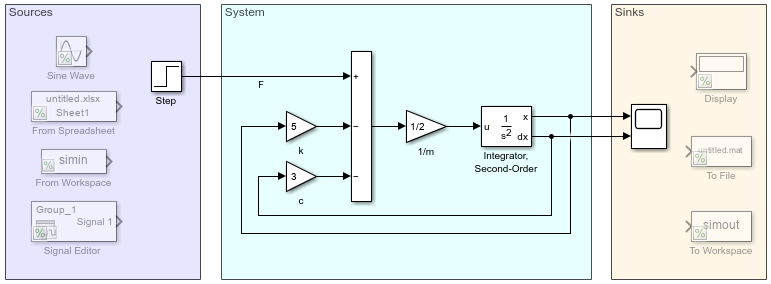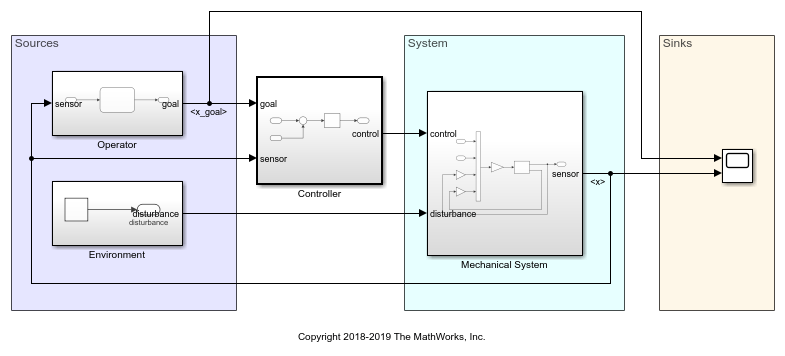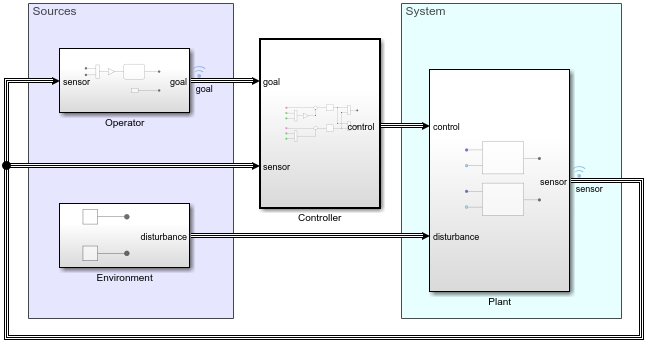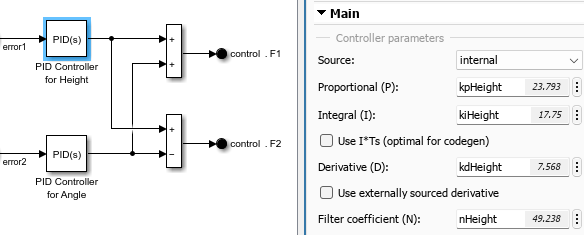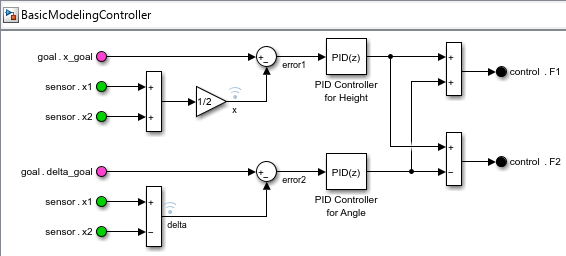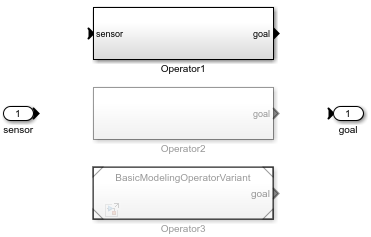建模
设计动态系统的模型
通过 Simulink® 利用模块图为算法和物理系统建模。您可以为线性及非线性系统建模,以便模拟真实的现象,如摩擦、齿轮滑动和硬限位。
通过将各组模块组织成子系统,可以将您的模型设计成层次结构。利用这种方法,可以构建反映真实系统的离散组件,并对这些组件之间的交互进行仿真。
尽早考虑系统设计需求可以减少设计过程后期发现的错误数量。有关迭代设计的示例,请参阅基本建模工作流。
使用 Simulink 进行基于模型的设计,其中系统模型是整个开发过程(从需求开发到设计、实现和测试)的核心。
类别
- 设计模型架构
创建独立组件以便在模型或团队之间共享,通过模型层次结构降低视觉上的复杂度
- 管理设计数据
选择如何存储、分区和共享小型工程和复杂模型层次结构的模型设计数据
- 设计模型行为
特定功能和应用的建模方法
- 配置信号、状态和参数
配置模块参数、信号范围、初始状态、数据类型、采样时间
- 配置输入和可视化
提供信号数据并决定如何可视化其仿真
- 分析和重新设计模型
评估设计完整性和模型行为
- 测试模型组件
管理组件测试数据,在 SIL 或 PIL 仿真中执行测试套件,配置 Model Verification 模块,生成选项文件以进行 Polyspace® 分析
- 建模规范
适用于模型架构、设计和配置的应用程序特定规范
- 工具鉴定与认证
使用 IEC Certification Kit 或 DO Qualification Kit 来鉴定 Simulink
